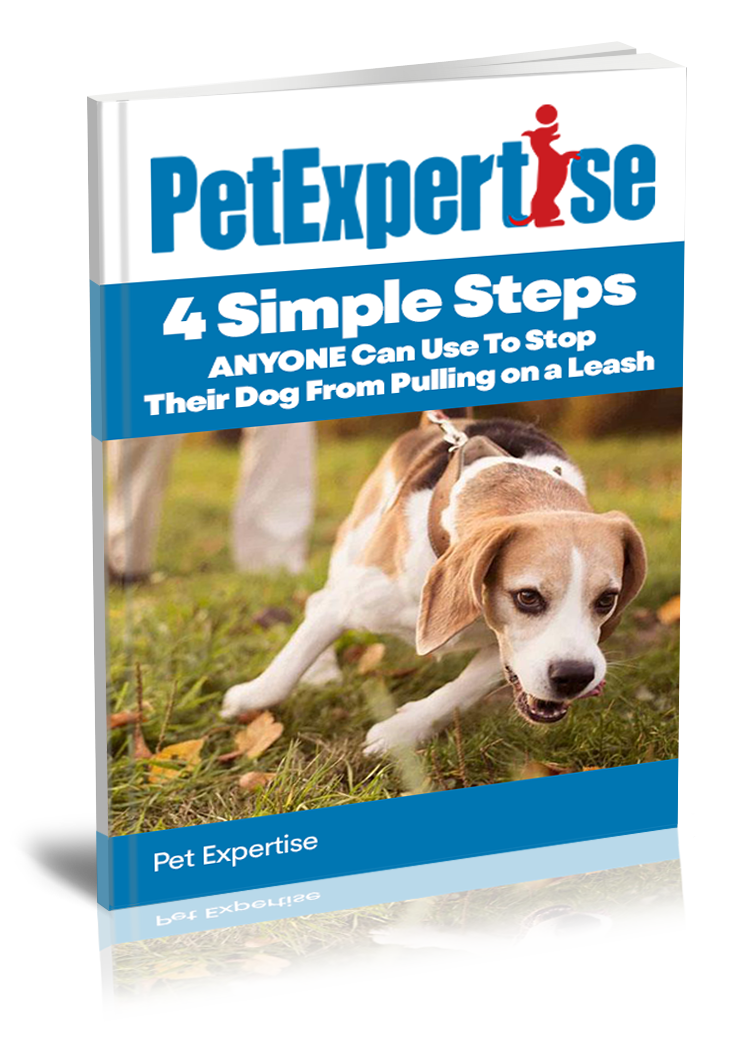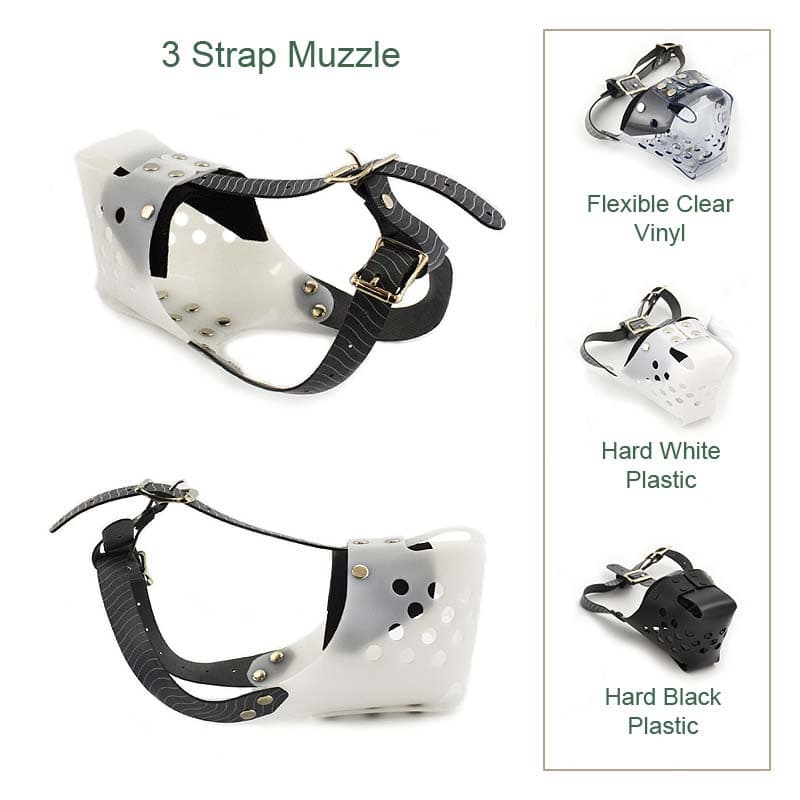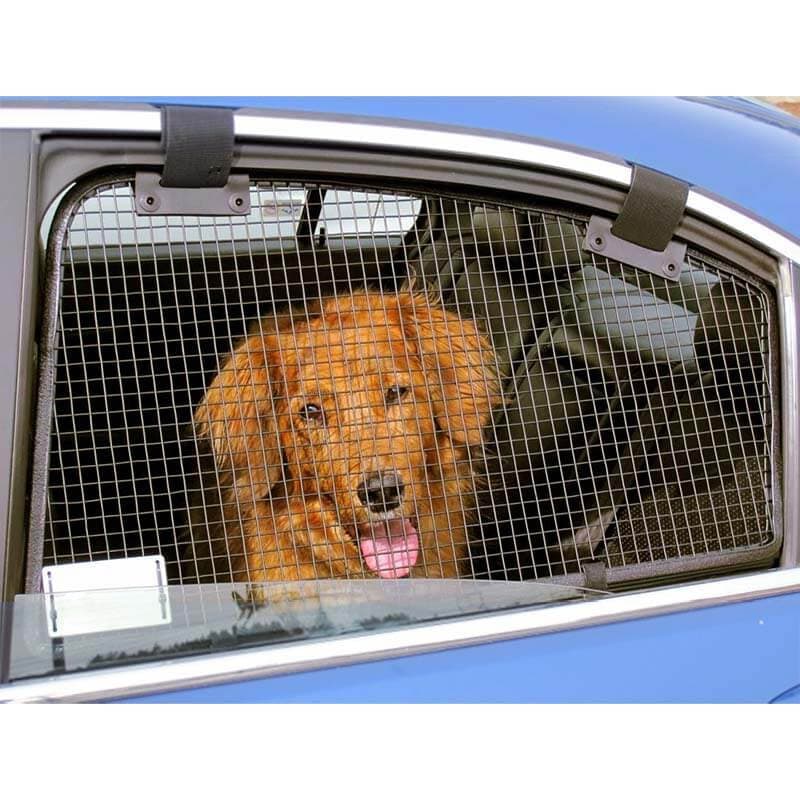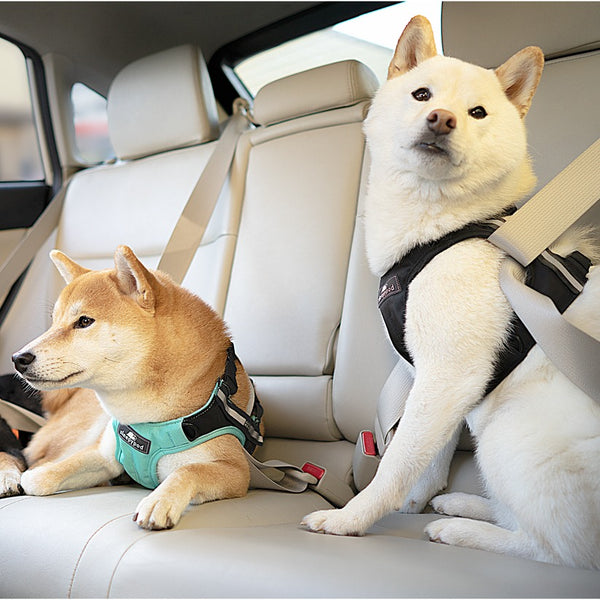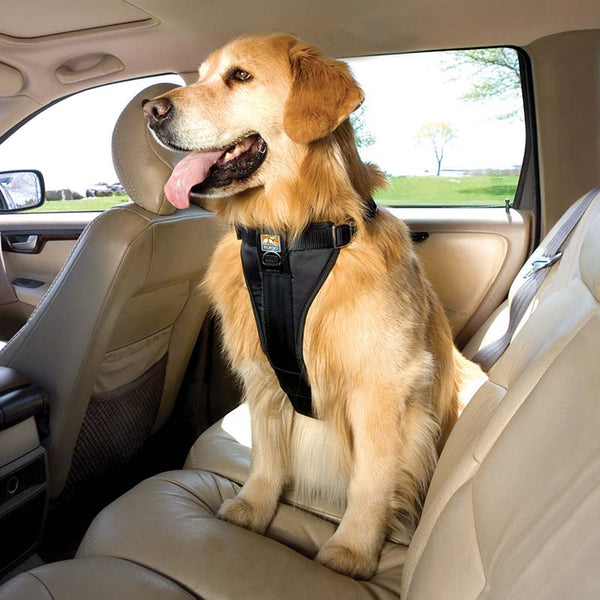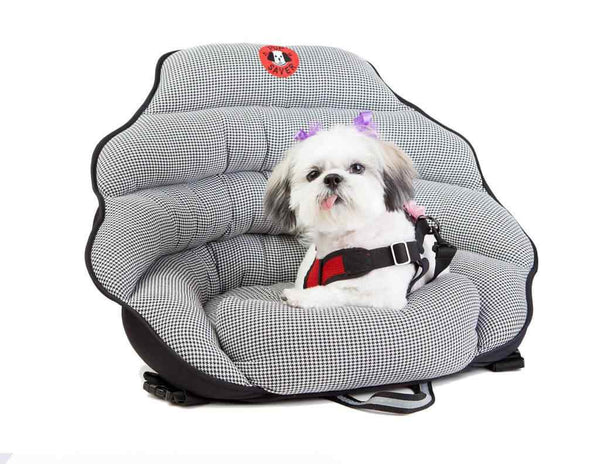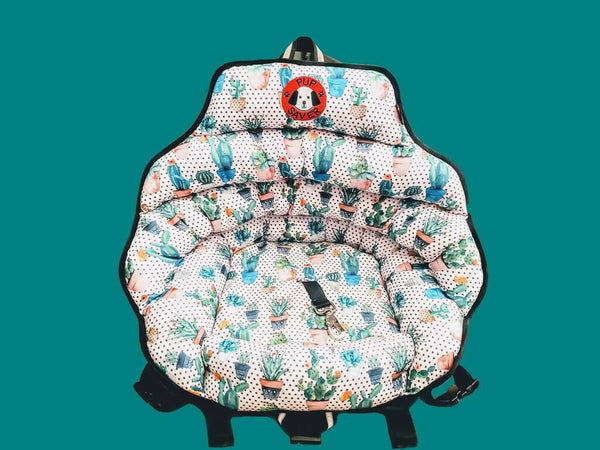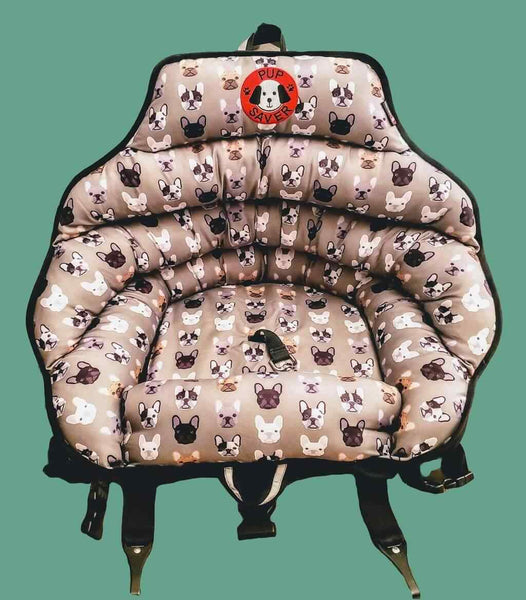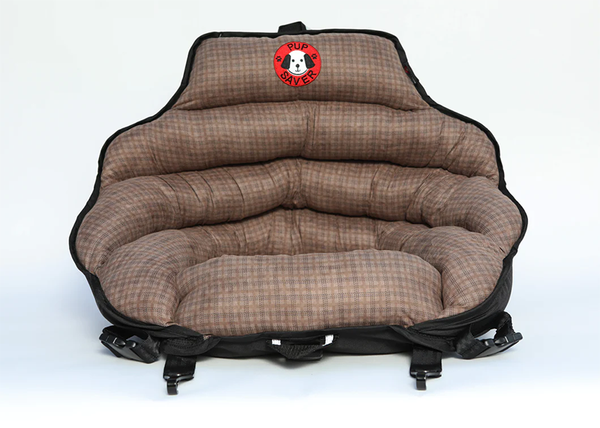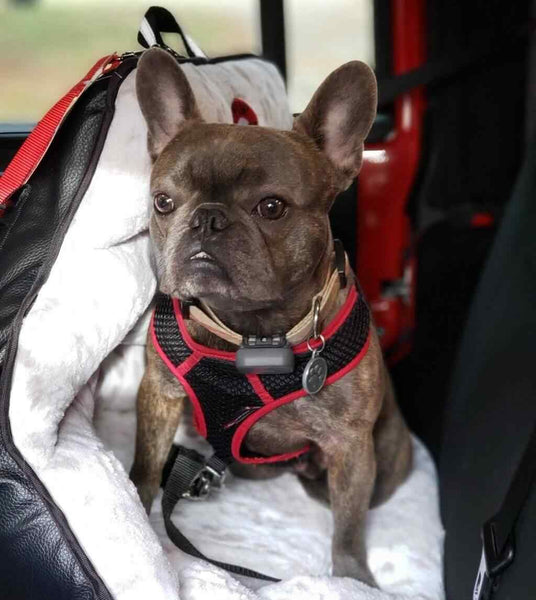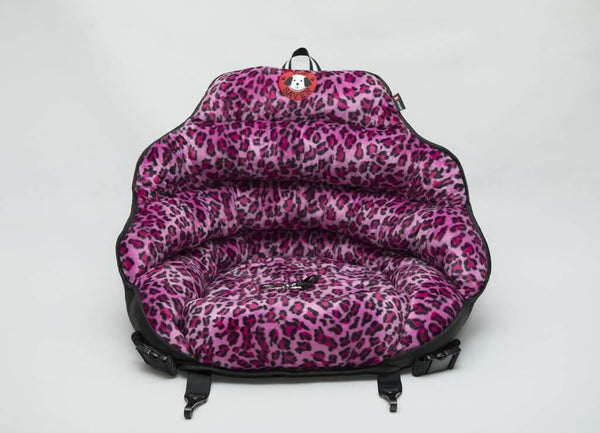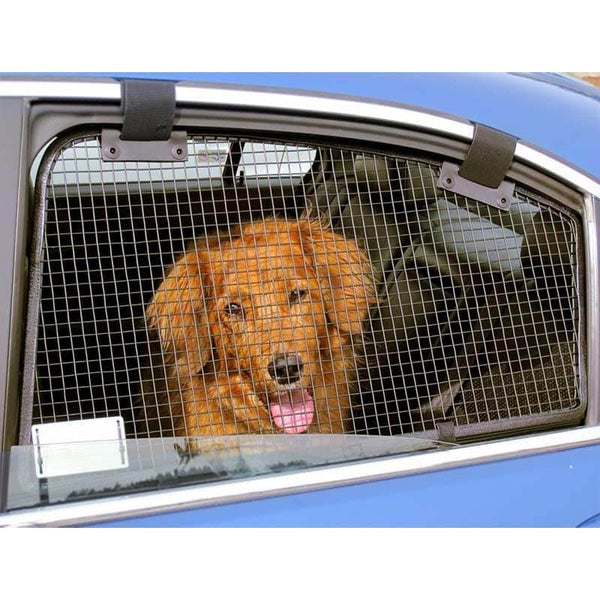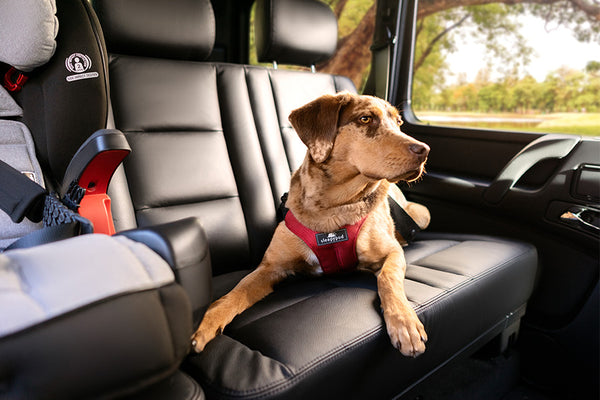PupSaver Front Seat Use
Note: AirPupSaver 45 is for back seat only. Only PupSaver 25 or AirPupSaver 25 can be used in the front seat safely:
PupSaver was designed by a team of Safety Design Engineers, Veterinarians and Auto Industry Professionals who all agree that protecting dogs in accidents from what are referred to as the second and third impacts could save their lives. With that principle in mind we decided that a rear-facing design, which mimicked a child safety seat, was the way to go. It may seem counter intuitive, after years of hearing that the back seat is safest, to use a *PupSaver in the front seat. But we have designed this seat to work in harmony with the passenger side air bag. It is important to draw a distinction between child safety seats, which are far more likely to extend into the passenger airbag deployment zone, and PupSaver. Our safety seats are constructed from ballistic nylon, which acts as an energy absorbing barrier. The seatbelt around the top of the PupSaver will pull it towards the seat in the case of an accident or hard stop. This would not be the case in an accident with a rear-facing child safety seat, which is rigid and has a shaped differently from our seats. We are by no means trying to change the dialogue around back seat safety for children, or encourage anyone who is in favor of putting their dog in the back seat to change their mind. We only mean to provide a solution for those drivers who need or want to have their dog in the front seat, whether for medical reasons, or personal preference. (*It should be noted that only Original PupSaver and AirPupSaver 25 may be used in the front seat. AirPupSaver 45 is for back seat use only.)
The following information was adapted from nhtsa.gov and serves to show how, with proper installation, you can feel safe placing your dog in the front seat if they are in a PupSaver (words in red are added by PupSaver to demonstrate how we are operating in accordance with NHTSA guidelines for child safety in the front seat):
NHTSA recommends placing all children 12 and under in the rear seat. That is the safest place. If no option exists other than seating a young child in the front seat, several steps must be taken:
1) First, the child needs to be properly restrained in the child seat.
(PupSaver provides this restraint, plus the added benefit of impact protection)
2) Second, the vehicle seat needs to be pushed all the way back, to maximize the distance between the child and the air bag
(PupSaver must be installed with the passenger seat moved all the way back, as per our installation instruction manual).
3) Third, the child needs to be sitting with his/her back against the seat back, not wiggling around or leaning forward, with as little slack as possible in the belt in order to minimize forward movement in a crash
(PupSaver works with the existing seatbelt pretensioner system to keep the PupSaver itself, plus the dog inside, against the seat back. Not to mention the amount of protection provided by PupSaver's ballistic nylon backing and dense poly fill and/or air chambers inside).
Additionally, the front passenger seat and passenger side airbag are safer in 2016 than they have ever been, for several reasons.
Passenger airbags in newer model cars (around year 2000 and forward) have "passenger presence" systems, which are not activated until the weight or "load" of a full grown adult (between 86-100 lbs, the lowest average weight of an adult, in most cars) is registered. A fully loaded PupSaver, with an occupant within our limit of 30 lbs, would not approach this weight "“ so you are covered if your vehicle has this system. A light will usually come on indicating "Passenger Airbag On/Off" in such vehicles. Many vehicles also offer the option to turn your passenger side airbag on and off, depending on who is riding in your front seat.
If you have an older model vehicle, with passenger airbags (which became a requirement around 1996), and the airbag deploys, it will look something like this: Watch Video (footage courtesy of YouTube/ SRTC Automotive Technology)
As you can see, unlike a driver side airbag where the airbag comes straight out, to protect the driver from the steering column, the passenger airbag comes out and up (to protect you from the dashboard and windshield). In the case of an accident, or hard stop, the PupSaver, which is belted into the passenger seat, acts like a safety net, tightening with the seatbelt pretensioner (which automatically fires in tandem with the airbags), pulling the unit into the optimal position for impact.
In either case, your dog is completely enveloped by the PupSaver's ballistic nylon barrier against the seat back upon impact. However, our recommendation is always that, when in doubt, you check with your vehicle manufacturer and investigate your own passenger airbag system. In preparation for all possible outcomes, the passenger seat should always be positioned all the way back, as far as possible from the dashboard before the PupSaver is installed.
- Choosing a selection results in a full page refresh.
- Press the space key then arrow keys to make a selection.

